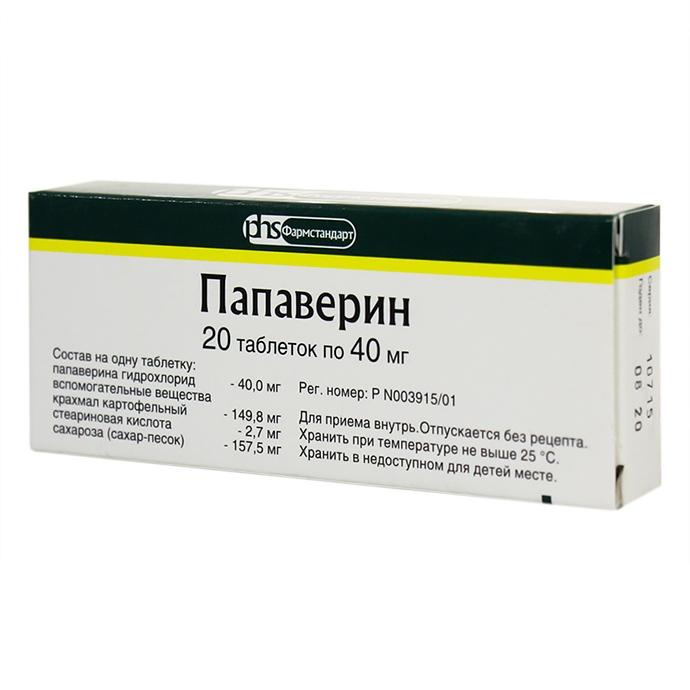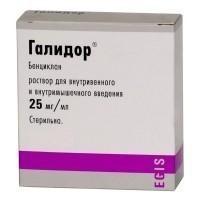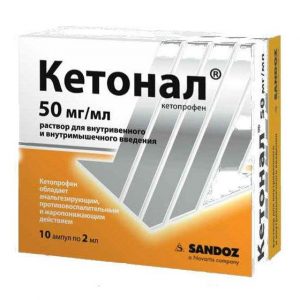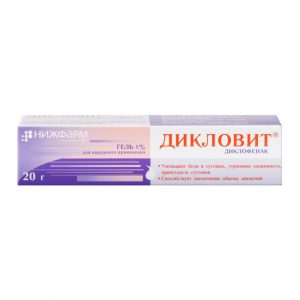Description
Latin name
Papaverine
Release form
Tablets.
Packing
20 tablets per pack.
Indications
Spasm of the smooth muscles of the abdominal organs (cholecystitis, pylorospasm, spastic colitis, renal colic)
spasm of the brain vessels
peripheral vasospasm spasm (endarteritis)
angina pectoris in the composition.
Contraindications
Hypersensitivity,
glaucoma,
AV block,
impaired liver function,
advanced age (risk of hyperthermia),
childhood (up to 6 months).
Use during pregnancy and lactation
During pregnancy and during lactation (breastfeeding), the safety and effectiveness of papaverine has not been established.
Composition
1 tablet contains 40 mg of papaverine hydrochloride.
Dosage and administration
Subcutaneously, intramuscularly – 1-2 ml of a 2% solution (20-40 mg) 2-4 times a day, intravenously, slowly 20 mg with preliminary dilution in 10-20 ml of a 0.9% sodium chloride solution.
For elderly patients, the initial single dose is not more than 10 mg.
Inside adults, 40-60 mg 3-4 times a day.
For children from 6 months. up to 2 years – 5 mg, 3-4 years – 5-10 mg, 5-6 years -10 mg, 7-9 years – 10-15 mg, 10-14 years – 15-20 mg 3-4 times a day .
Side effects
Allergic reactions
AV block,
ventricular extrasystole,
decreased blood pressure,
drowsiness,
constipation,
increased activity of hepatic transaminases,
eosino.
Drug Interaction
Reduces the effect of dopegite.
Efficiency decreases when smoking.
Overdose
No data.
Storage conditions
In a dry, dark place at a temperature of no higher than 25 ° C.
Expiration
2 years.
Deystvuyuschee substances
Papaverine
Dosage form
dosage form
tablets
Pharmstandard-Leksredstva, Russia




